Home Reviews ,,,,, One of the weaknesses of the iPhone is its security. It seems a paradox, but the policies that Apple implements to keep its users “safe” and make the phone use properly make the device the market success it still is today. As paternalistic as the choices made by Steve Jobs may have seemed, the iPhone not only does not allow you to install apps that do not go through the official store (except with jailbreak, now practically fallen into desuetude) but also does not pertain to a series of activities including that of recording phone calls.
It seems a strange thing, and in reality it has long been debated why Apple has decided not to give the opportunity to those who want to record important phone calls: journalists, researchers, politicians, law enforcement, lawyers and people in commerce. In the end, the protection of the privacy of those on the other side of the wire (indeed, of the “wireless”) was prevalent and Apple has chosen not to have calls recorded regardless. On Android, however, it is possible without great difficulty.
But now things have changed, perhaps also due to the constant requests of the many journalists, bloggers and podcasters who use the iPhone as a work tool and would like to be able to record phone calls and interviews to put them back on the air, to take better notes, to make a work that until now the iPhone did not allow easily. Now you can.
After the “tricks”, such as telephone calls recorded through special numbers that act as a “bridge”, PhotoFast arrives with its Call Recorder +, a device that connects to the Lightning socket on the phone and allows you to make calls and more. Let's see what it is.
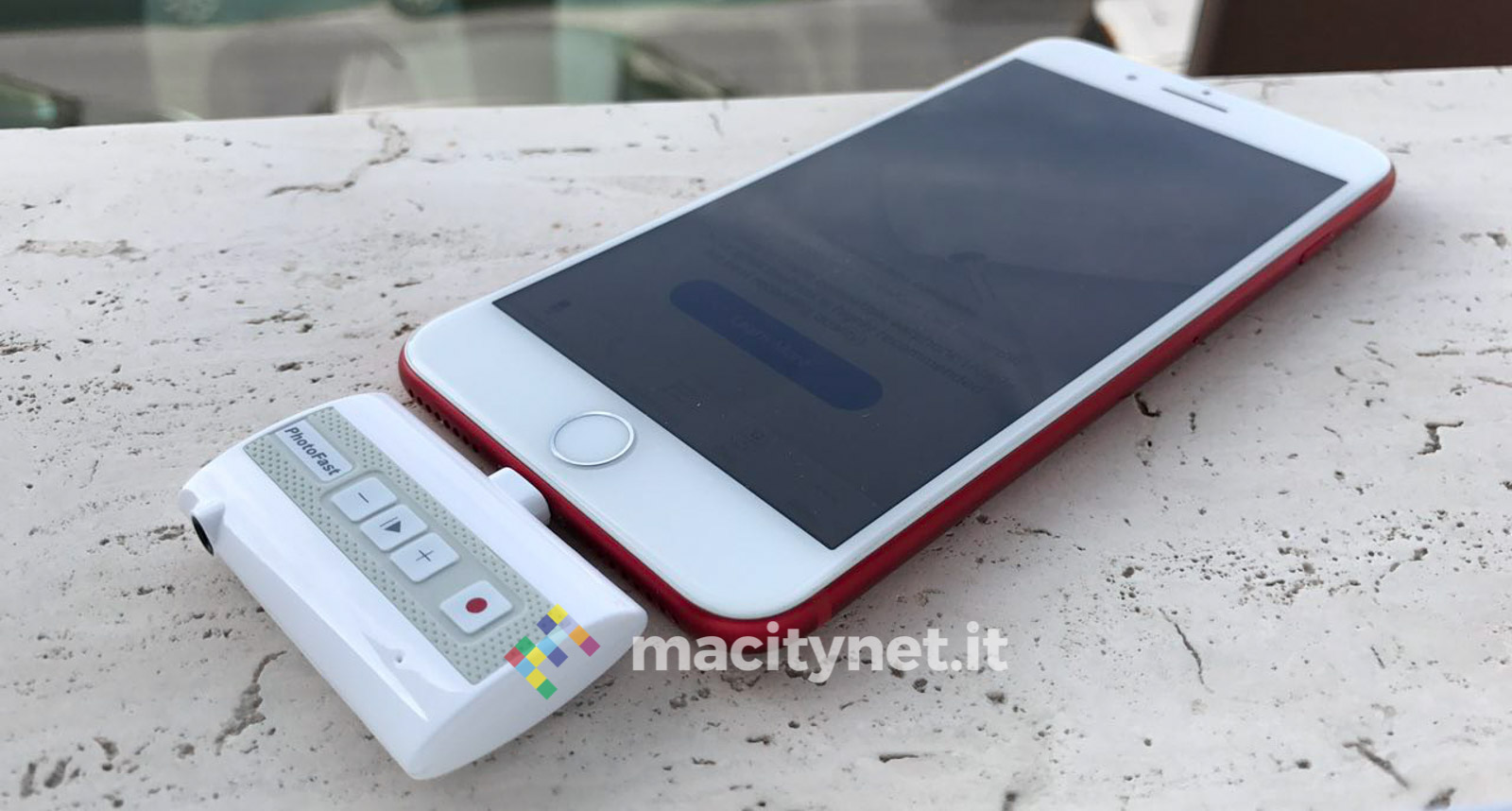
How Call Recorder is made +
The device is not small but it is racy. It helps that its transparent and white packaging is truly minimalist and can also be used as a travel box.
The luminaire has an “upward” and “downward” direction, but in reality, thanks to the double-sided socket, Lightning can be placed both up and down. It has four buttons: play-pause, plus and minus, record (the classic red round). With these hardware commands, the device can be used independently of any app and function as a real external circuit. After that, there are two holes: one for inserting the microSD and one for the 3.5mm mini jack headphone. The latter is a contradiction, because now with current and future iPhones there is no longer this jack while a Lightning socket would be required which is absent.
The device does not require batteries because it takes its power from the data port of the iPhone and basically acts as if it were an external headset, which then “passes” the signal to the actual headset inserted in the appropriate hole. In practice, it is a kind of external sound card that allows you to “work” the sound that comes out of the iPhone, make it analog for traditional headphones and still record it.
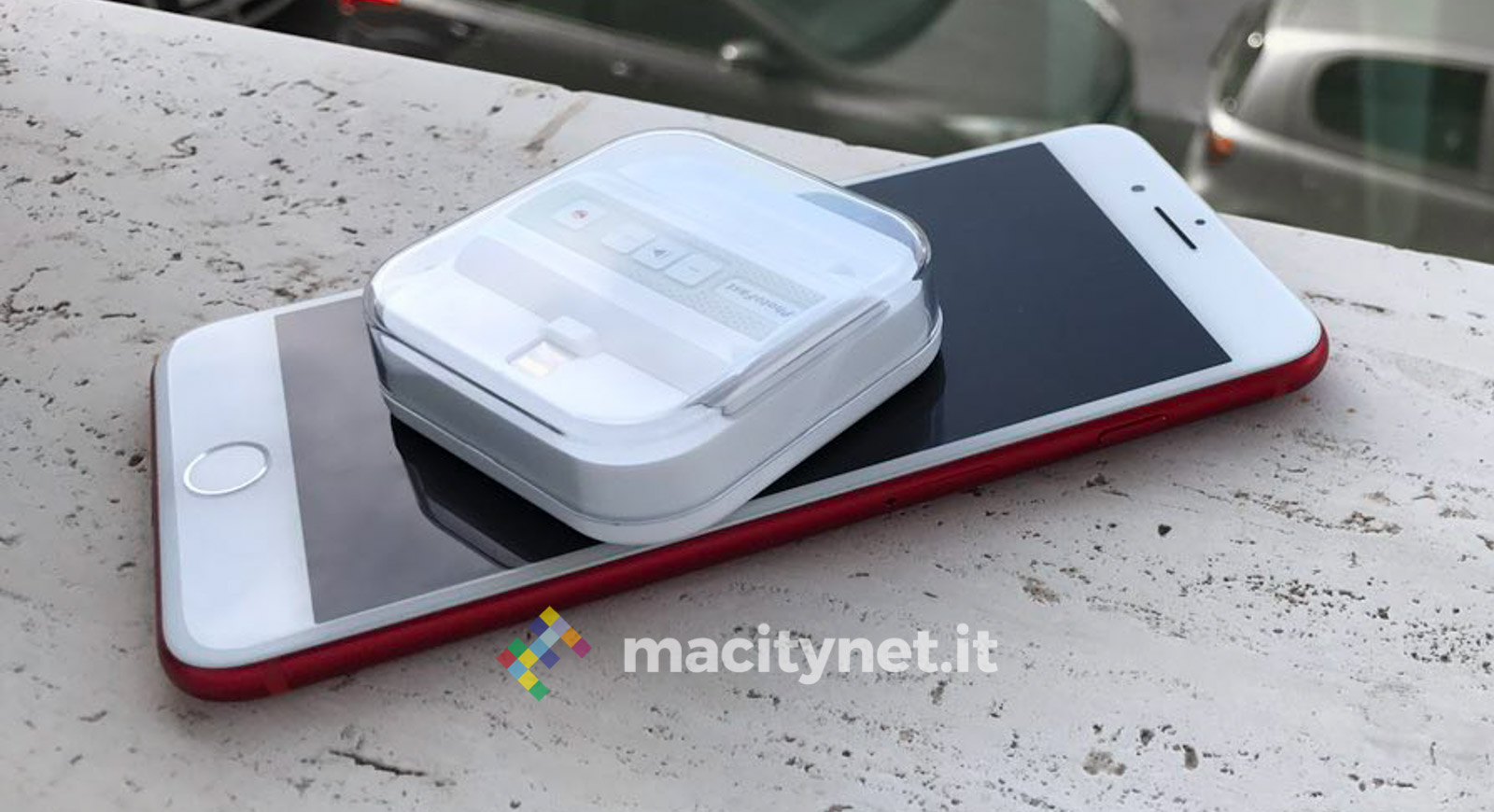
How Call Recorder works +
It is necessary to download from the app store the free software Call Recorder + by PhotoFast, which presents numerous options with the usual all-oriental confusion: the company is a quality Chinese, but it always remains rather “complicated” and unnecessarily baroque as regards Structuring the software user experience, as we have also seen in the past with other extremely valid products from the hardware point of view.
Mind you, even the software works just fine when you understand how it goes and allows you to do many things. The main one is to record outgoing and incoming calls. You have to connect the traditional headset to the mini jack and call or receive by pressing the red recording button and the voice of both is saved in m4a format on the SDcard. Phone calls via traditional operator, as mentioned, but also Whatsapp, Messenger, Viber, Line, Skype, WeChat, Telegram, Kakao Talk, Zalo and Icq. In short, everything. The quality is excellent and you can set a different sampling frequency and also the file format. But that's not all.
The system records in stereo with our voice and that of our interlocutor on different channels, so that they can then be separated and edited separately in the app itself. Then you can also save them on cloud services: iCloud, Dropbox, Google Drive, OneDrive, or export them as an attachment to emails and messages, share them on social networks, YouTube in the head, or pass them to iTunes and iMovie. All the magic that the Apple platform allows you to do, in short, with its system for sharing different files.
Latest news introduced with a summer update of the app: the ability to transform audio into written text. The system works a bit poorly, but maybe it will be improved in the next versions.
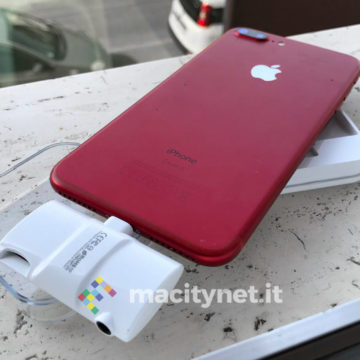
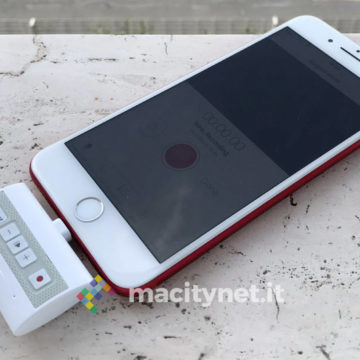
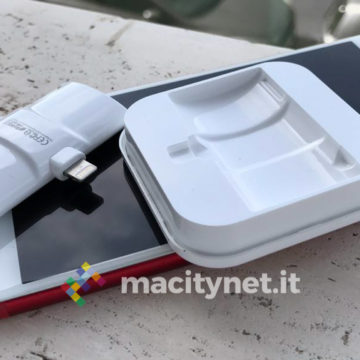
In conclusion
A device that allows you to record good quality and very flexible phone calls with iPhone, does not noticeably increase the consumption of the iPhone and you can always carry it with us. The additional functions are still not up to par but the flexibility is truly remarkable and the recording is always reliable.
The cost, 99 euros on Indiegogo with delivery times around 15 days, is not excessive. Too bad in the package there are neither a pair of headphones compatible with a three-way mini jack (microphone as well as earphones). A note: recording conversations is always legally possible, making them public without the consent of the interested party but no.
PRO
Quality and configurable recordings with all services Complete and full-featured app Allows you to reuse old minijack headphones Irrelevant consumption Very comfortable hardware buttons
AGAINST
Lightning plug-in missing There are no headphones and card in the box Unnecessarily complex app interface
,,





